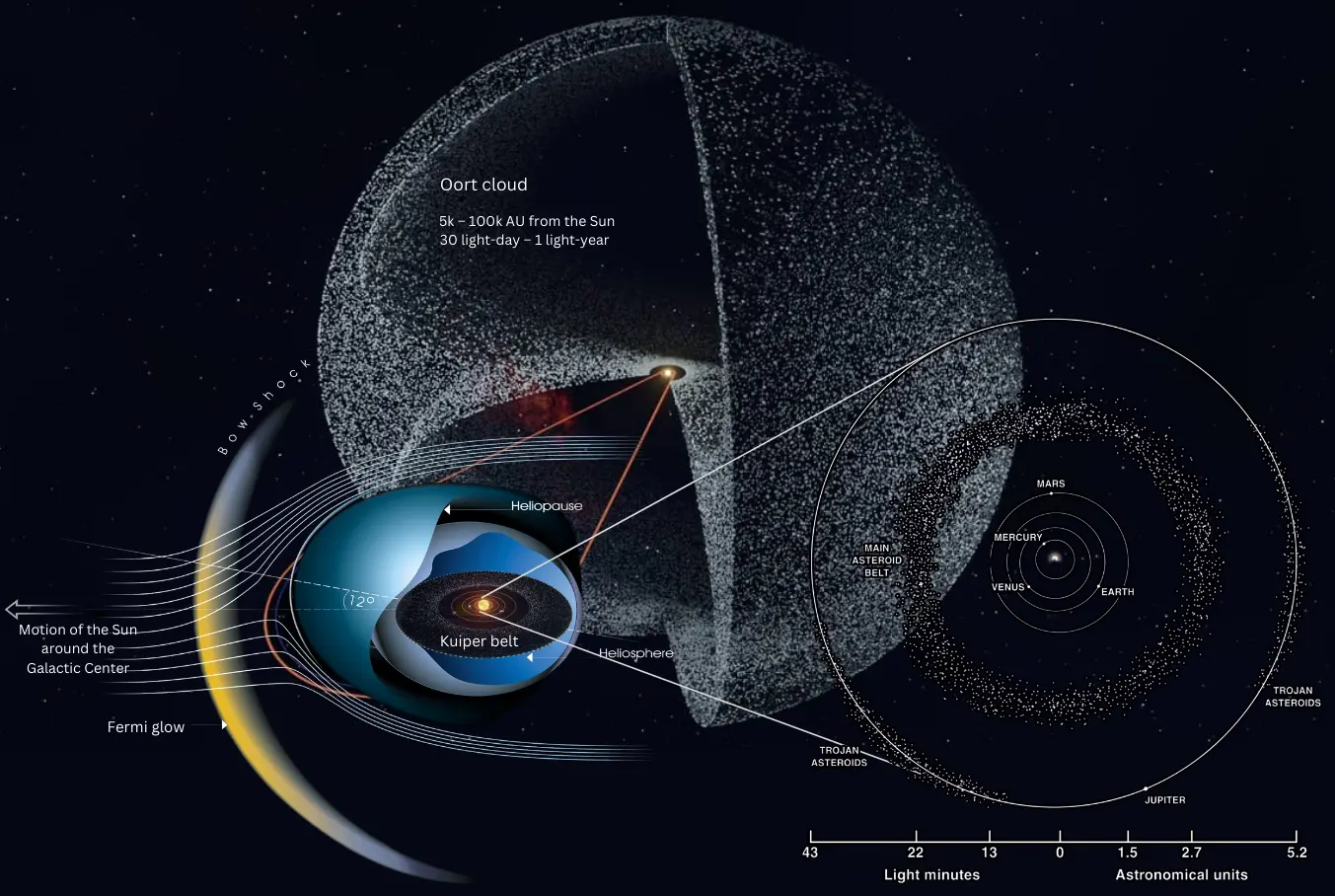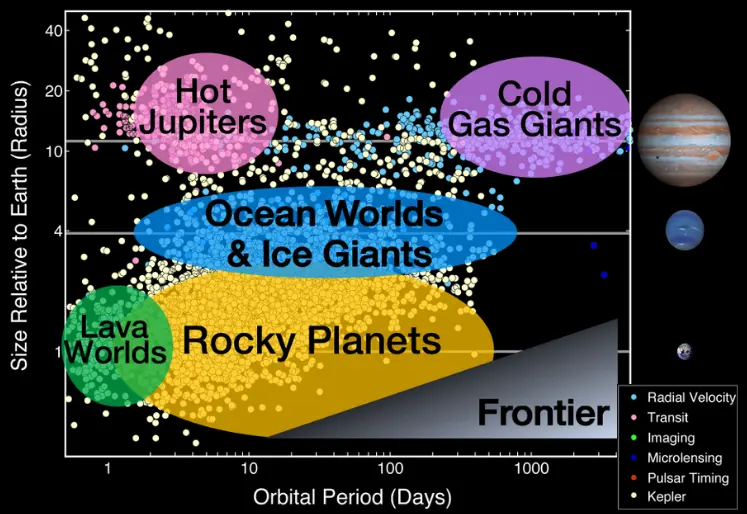Rocky belts and icy clouds
From the Oort cloud to the Kuiper belt
The heliosphere you encountered above is tiny compared to the Oort Cloud (OC), the outermost region of our solar system almost 1 ly in size. The OC begins at a distance of around 5,000 au, or around 30 light-days, from the sun. Note that the distance of the Earth from the Sun is only around 8 light-minutes. The cloud is made of almost a trillion 1-km sized icy bodies. Some of them can sometimes rush toward the sun and become visible to us giving rise to the long-period comets (LPC), comets that come back in extremely long intervals of time. When a comet enters the inner solar system, its ice melts and creates a long tail giving the characteristic shape of a comet well known in all cultures since many millennia.
If you zoom into the center of the Oort cloud, you can see the 100-au sized heliosphere in the middle traveling along its orbit around the center of the Milky Way. Inside the heliosphere you can also notice the Kuiper belt at a distance of 30 au from the Sun. Unlike the Oort cloud, this belt is flat and located on the plane of the solar system. But similar to OC, it is made of icy bodies some of which can rush toward the sun occasionally giving rise to the short-period comets (SPC), comets that come back in short intervals of time. Both Oort cloud and Kuiper belt were discovered by Dutch astronomers: Jan Oort (1900–92) and Gerard Kuiper (1905–73).
The total mass of the solar system is around 2 nonillion (30 zeros after 1) kg and 99.9% of that mass is due only to the sun. Everything from Mercury to Oort Cloud together contribute only 0.1% to the total mass of the solar system. The sun is truly humongous.
The tilt of the rotational axis of a planet determines its seasons. A planet has two main motions: rotation on its axis and revolution around the sun. Here the planets are shown in sequence of their distance from the sun. The tilt of each planet is measured from a line perpendicular (vertical) to the plane of the solar system. Earth’s axis has a tilt of around 23 degrees which is similar to Mars, Saturn and Neptune. Mercury and Jupiter have minimal tilt. Venus rotates upside down and Uranus rotates on its axis lying down. Uranus is like a spoilt child spinning around its mother lying on the floor of a shop.
The greater the tilt from the vertical direction, the stronger the seasons. So the Earth, Mars, Saturn and Neptune have similar strong seasonal variations. Mercury and Venus do not have any season. Uranus has extreme seasons, but Jupiter very mild. The reason behind a season on Earth is illustrated in the video. In June-July northern hemisphere is tilted toward the sun and the southern hemisphere is tilted away, so sunlight falls more vertically (low angle) in the north. So it is summer in the north (Bangladesh, Bulgaria) and winter in the south (Argentina, Australia). The opposite would happen in December-January, sunlight would fall at a higher angle in the north leading to less heat and winter. In March and September both hemispheres are equally distant from the sun and the heat is moderate in both leading to Spring and Autumn.
Planets of the solar system
Rocky, gassy and icy planets
Rocky, gassy and icy planets have different structure. The four rocky planets are similar in their internal structure. They all have a core made of molten iron and nickel. The inner core is solid but the outer part of the core is molten, liquid. The motion of the molten metal gives rise to magnetic fields. Earth acts like a huge bar magnet whose north pole is toward the geographic south pole, and vice versa. The core is surrounded by a thick mantle of viscous rock (silicon and oxygen) and, finally, a thin solid crust. If the planet is geologically active, its crust is divided into different plates that float on the upper layer of the mantle.







